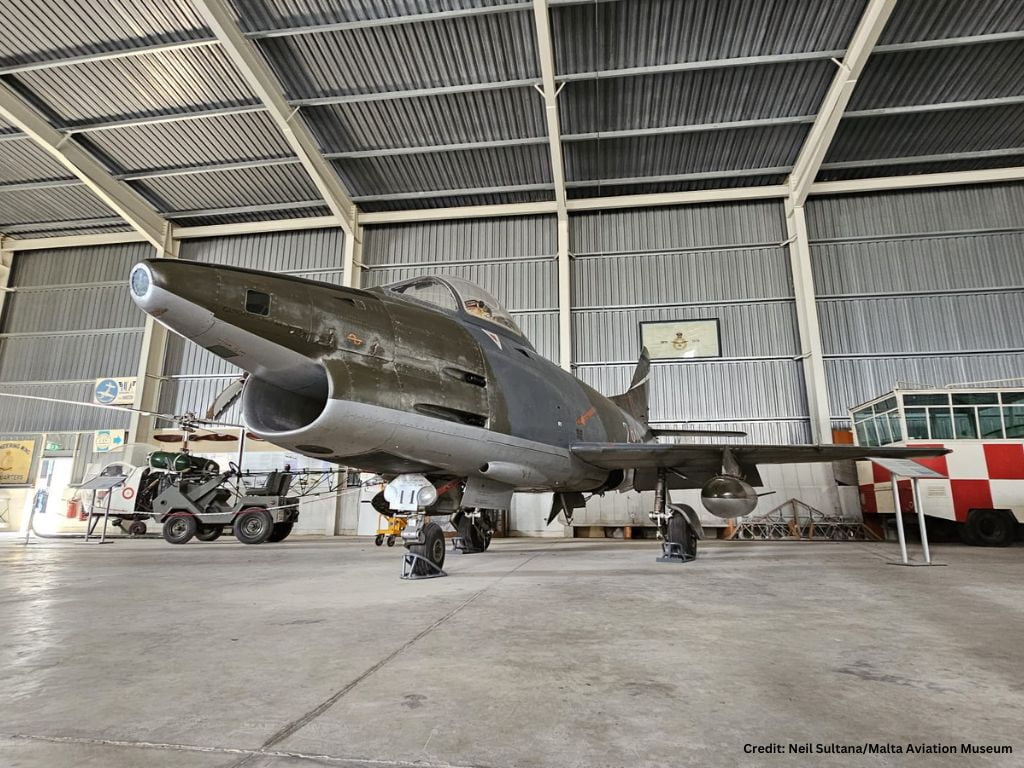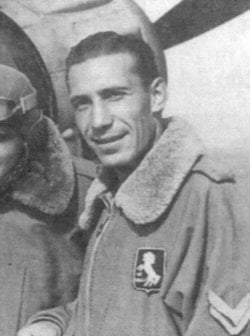By Mark Zerafa Gilson
In the early fifties, it was realised that most European Air forces within NATO were mainly equipped with outdated front-line aircraft, most of which had been designed during World War II. It seemed to make sense for these countries to re-equip with one standard type of aircraft, built to a standard requirement. In 1952, NATO held a conference in Lisbon. One of the outcomes was a specification called NBMR-1: NATO Basic Military Requirement 1.
This called for a ground-attack aircraft with a loiter capability of 8-10 minutes over a battlefield up to 175 miles distant from its base. The aircraft was to be capable of taking off from stretches of motorway or even semi-prepared strips. Armament had to be at least four 0.5 inch calibre machine-guns, or alternatively two 30 mm cannon, and two 500 lb bombs.
Twelve companies responded to NBMR-1. One of the most notable was the Folland Gnat, perhaps the best of them all, but far too radical to gain much favour with NATO officials. The Gnat lost out at an early stage but was adopted by India and Finland. Three aircraft were selected for a fly-off competition; the Fiat G-91, the Breguet Taon and the Dassault Etendard VI. These prototypes were partly funded by the United States (50%) France (25%) and Italy (25%). The Americans were also funding the chosen powerplant, the Bristol Orpheus.
The prototype G-91 flew on August 9th, 1956, and underwent NATO evaluation a year later in France. Italy did not even wait for the result of the comparative trials to be announced, and ordered a pre-production batch of G-91s. The aircraft was declared the winner of the fly-off, and entered production in 1958 as the G-91R having an armed reconnaissance capability, with three 70rnm cameras fitted in a restyled blunt nose.
Having lost the competition, France lost all interest in the aircraft, and actually procured the Etendard for its naval air arm. Through the American Military Assistance Plan. Greece and Turkey were each allotted 50 aircraft. However, after the first crew aircraft of the Greek batch were evaluated by the Hellenic Air Force at Larissa, both countries declared the aircraft as incompatible with their requirements. The U.S Army evaluated ten examples, but no orders were placed.
With no home-bred aircraft to turn to, West Germany believed it would be wise to be seen as a faithful NATO member by ordering the G-91. A hundred were supplied by Fiat, and licence production began at Flugzeug Union Sud, adding a further 294 to the total. These were the first combat jets to be built in Germany since 1945. Portugal was the only other customer of the type, receiving 40 aircraft which had been previously allotted to Greece and Turkey.
Work on a two-seat trainer variant began in 1958, and this first flew on May 31st, 1960 as the G-91T. This was envisaged as an advanced trainer used to train fast-jet pilots to transonic flight. The aircraft could be reconfigured to attack configuration at short notice, if an emergency were to arise. The instructor sat in a stepped-up cockpit after of the pupil’s, the step up giving him some degree of forward vision. Fiat built 76 for the Aereonautica Militare and 44 for the Luftwaffe. A further 22 were built in Germany. Portugal only operated a handful.
Experience gained from NATO excercises and the American campaign in South-East Asia showed how invaluable aircraft in the G-91 class were, but a greater warload and better resistance to combat damage would have been desiderable. Fiat decided to embark on a new aircraft, based on the G-91R, with twin-engined reliability, improved warload and range and more sophisticated avionics. In order to bolster confidence in the type, it was designated G-91Y, but this proved counter-productive when the aircraft was marketed, because many saw it simply as a more powerful G-91R.
A Y-shaped intake was fitted as result showed that this was the most resistant to combat damage. Wing area was increased, and automatic slats and Fowler flaps were fitted. Fuel tankage was doubled. Two afterburning General Electric J-85 turbojets were fitted side by side giving a 63% increase in take-off thrust as well as much-improved acceleration. Tail surfaces were enlarged and the landing gear was beefed-up and fitted with improved brakes, due to the aircraft’s higher weight. A zero-zero ejector seat was fitted inside the armoured, fully air-conditioned cockpit.
The first of two prototypes flew on December 27th 1966. Flight tests were successful, and the first of 20 pre-production aircraft were delivered to the A.M.I. in 1968. A total of 75 G-91Y were built for the Aeronautica, but this was the only customer of the type.
In service, the aircraft suffered normal teething trouble as well as more serious air intake problems in certain areas of the flight envelope. However, all Ginas were highly maneuverable and this made them excellent aerobatic mounts, especially the lighter G-91Rs. It was inevitable that the Italian aerobatic team, the Freccie Tricolori, re-equipped with G-91s from Canadair Sabres in 1963.
It was with these aircraft that the team made its first appearance in Luqa, on the occasion of the official opening of Runway 14/32’s extension on October 1st, 1977.



